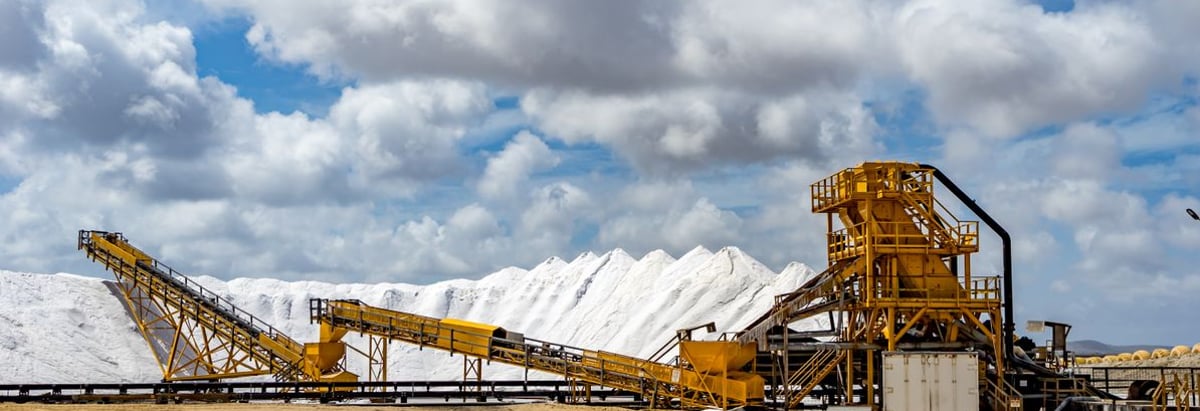Stock Analysis
- China
- /
- Metals and Mining
- /
- SZSE:000960
Slowing Rates Of Return At Yunnan Tin (SZSE:000960) Leave Little Room For Excitement

To find a multi-bagger stock, what are the underlying trends we should look for in a business? Firstly, we'd want to identify a growing return on capital employed (ROCE) and then alongside that, an ever-increasing base of capital employed. If you see this, it typically means it's a company with a great business model and plenty of profitable reinvestment opportunities. However, after investigating Yunnan Tin (SZSE:000960), we don't think it's current trends fit the mold of a multi-bagger.
Return On Capital Employed (ROCE): What Is It?
For those who don't know, ROCE is a measure of a company's yearly pre-tax profit (its return), relative to the capital employed in the business. To calculate this metric for Yunnan Tin, this is the formula:
Return on Capital Employed = Earnings Before Interest and Tax (EBIT) ÷ (Total Assets - Current Liabilities)
0.084 = CN¥2.6b ÷ (CN¥39b - CN¥7.8b) (Based on the trailing twelve months to June 2024).
Therefore, Yunnan Tin has an ROCE of 8.4%. On its own that's a low return, but compared to the average of 7.0% generated by the Metals and Mining industry, it's much better.
See our latest analysis for Yunnan Tin
In the above chart we have measured Yunnan Tin's prior ROCE against its prior performance, but the future is arguably more important. If you'd like to see what analysts are forecasting going forward, you should check out our free analyst report for Yunnan Tin .
What Does the ROCE Trend For Yunnan Tin Tell Us?
There are better returns on capital out there than what we're seeing at Yunnan Tin. Over the past five years, ROCE has remained relatively flat at around 8.4% and the business has deployed 59% more capital into its operations. This poor ROCE doesn't inspire confidence right now, and with the increase in capital employed, it's evident that the business isn't deploying the funds into high return investments.
On a side note, Yunnan Tin has done well to reduce current liabilities to 20% of total assets over the last five years. This can eliminate some of the risks inherent in the operations because the business has less outstanding obligations to their suppliers and or short-term creditors than they did previously.
What We Can Learn From Yunnan Tin's ROCE
As we've seen above, Yunnan Tin's returns on capital haven't increased but it is reinvesting in the business. Since the stock has gained an impressive 53% over the last five years, investors must think there's better things to come. Ultimately, if the underlying trends persist, we wouldn't hold our breath on it being a multi-bagger going forward.
One more thing, we've spotted 1 warning sign facing Yunnan Tin that you might find interesting.
For those who like to invest in solid companies, check out this free list of companies with solid balance sheets and high returns on equity.
New: Manage All Your Stock Portfolios in One Place
We've created the ultimate portfolio companion for stock investors, and it's free.
• Connect an unlimited number of Portfolios and see your total in one currency
• Be alerted to new Warning Signs or Risks via email or mobile
• Track the Fair Value of your stocks
Have feedback on this article? Concerned about the content? Get in touch with us directly. Alternatively, email editorial-team (at) simplywallst.com.
This article by Simply Wall St is general in nature. We provide commentary based on historical data and analyst forecasts only using an unbiased methodology and our articles are not intended to be financial advice. It does not constitute a recommendation to buy or sell any stock, and does not take account of your objectives, or your financial situation. We aim to bring you long-term focused analysis driven by fundamental data. Note that our analysis may not factor in the latest price-sensitive company announcements or qualitative material. Simply Wall St has no position in any stocks mentioned.
About SZSE:000960
Yunnan Tin
Engages in the tin production and processing activities in China.


